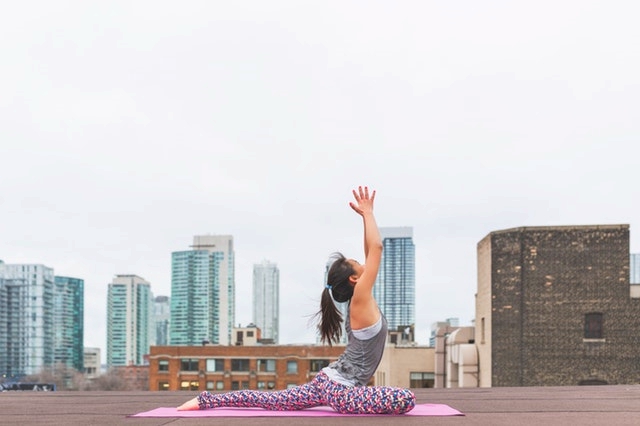Mindy Caplan EP-C |
Sept.
20, 2018

Keys to embarking on a path toward reduced stress and improved well-being
1. Pay attention to your breath
2. Yoga is a great way to learn breath work and relaxation
3. Physical fitness promotes mental fitness
Breath. Have you ever thought about how your breath changes when you are stressed, exercising, or relaxed? Learning how to relax is an integral component of stress reduction that is often overlooked. Experts have learned over the years that exercise plays a key role in the ability to relax, but as yoga has become more popular we are finding out that the breath can also help maybe even more.
Methods of stress reduction…”tend to reduce anxiety, depression, heart rate and blood pressure, and enhance a feeling of relaxation and well-being.”
Let’s start with relaxation exercises. Spring is a great time to check in with your mind and body to see how you are feeling. Winter is a time when more people are inside and sedentary, but once the weather begins to warm up spending time outside is mentally refreshing and relaxing.
Notice where you are holding tension in your body, and think about your breath paying attention to whether or not you tend to hold your breath or take shallow breaths. Mental stress tends to tighten the muscles in the body, which in turn creates more tension then raises the heart rate and tightens the muscles creating even more physical stress. Soften the jaw and watch how the shoulders and hips relax. Breathe slowly and deeply and notice how the body relaxes.
Yoga is a perfect stress reducer and mind/body relaxer. If practicing yoga on a regular basis is not in your daily routine just learning diaphragmatic breathing will help tremendously. Find a comfortable place to sit, close your eyes and take slow deep breaths, expanding the diaphragm with every inhale and exhaling completely. “Talk” to the muscles in your body and tell them to relax and melt. Softening the jaw releases tension in the neck, shoulders and hips and leads to total body relaxation.
Deep breathing can be done any time, anywhere.
Aerobic exercise raises the heart rate while engaging in the activity, but with regular cardiovascular exercise comes a mental and physical relaxation. When the heart rate is elevated for extended periods endorphins, or natural pain killers, are released and in time a relaxation occurs after the exercise is completed. If regular exercise is practiced, weight begins to shed and stress about weight is reduced.
Physical fitness promotes mental fitness, and if activities are enjoyable you will make time to exercise on a regular basis. Exercise doesn’t always have to be in the form of aerobic exercise. Lifting weights, pilates, yoga, and any other physically demanding exercise will help to relax the body if a regular exercise routine is followed.
Many methods of stress reduction exist, including breathing, meditation, progressive relaxation, and exercise. All tend to reduce anxiety, depression, heart rate and blood pressure, and enhance a feeling of relaxation and well-being.
Author: Mindy Caplan ACSM-EP is a New Mexico-based Fitness Instructor, Personal Trainer, Wellness/Lifestyle Coach, and Yoga Instructor.
Disclaimer: Opinions expressed in the Certification Blog are the authors’ and do not necessarily reflect positions of ACSM.